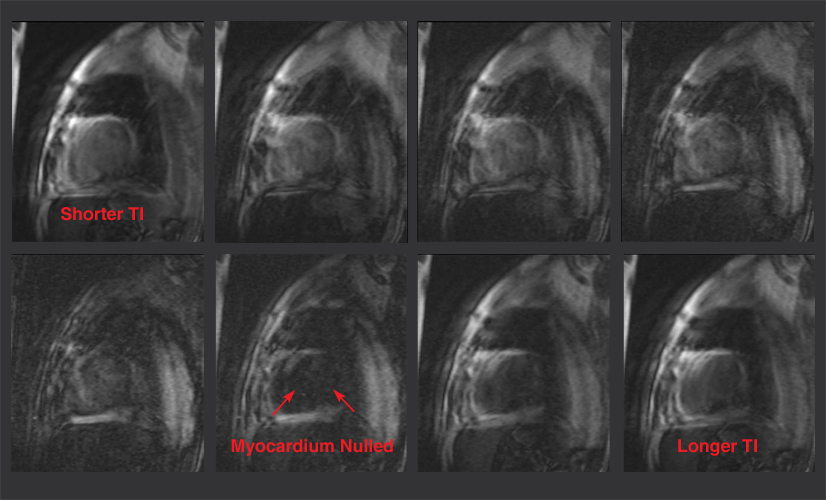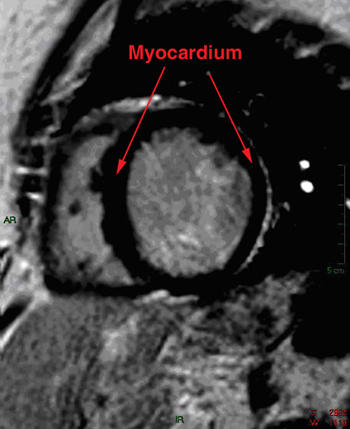Cardiac MRI > Technique > Inversion Recovery
Inversion Recovery
![]()
Inversion Recovery (IR) pulses are used to null the signal from a desired tissue to accentuate surrounding pathology. A common use of this technique is to null the signal from normal myocardium during delayed enhanced imaging. The nulled normal myocardium will be dark in contrast to the enhanced abnormal myocardium. IR pulses have a special parameter known as inversion time (TI). When attempting to null normal myocardium, one must find the appropriate TI at which the normal myocardium is dark. This usually occurs about 330 msec after the RF pulse, but varies from person to person. To determine the appropriate TI for an individual, a TI scout series is obtained where each image in the series has a progressively larger TI. Alternatively, a newer automated sequence known as Phase Sensitive Inversion Recovery (PSIR) can be used which does not require a TI scout. IR can also be used in fat suppressed images to null the signal from fat so that adjacent structures can be seen more clearly.

This series shows TI (inversion time) scout images with progressively longer TI. The TI at which the myocardium is nulled (usually about 330 msec) is then chosen for use in delayed enhancement imaging.

This image shows the appearance of normal nulled myocardium using an inversion recovery (IR) pulse sequence. This particular image was obtained using Phase Sensitive Inversion Recovery (PSIR). This sequence is used when looking for delayed enhancement, but none is present on this image.
